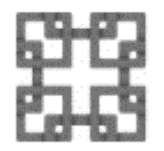Recently, the High Court of the Canton of Zug commented on the target audience of cryptocurrency services and the relevant similarity of figurative marks.
In the context of an application for interim measures, the High Court of the Canton of Zug examined the question of the audience to which cryptocurrency services are addressed. It also ruled on the similarity of a registered figurative trademark and a non-registered figurative mark (decision of the High Court of the Canton of Zug, OG Z2 2022 76 of 30 December 2022, legally binding).
The applicant with a registered trademark asked the court to prohibit the respondant from offering financial services under the sign (logo).
asked the court to prohibit the respondant from offering financial services under the sign (logo).
According to the applicant, there is a high likelihood of confusion between the trademark and the respondant logo. On the one hand, both use their marks for identical services, in particular the buying and selling of cryptocurrencies. On the other hand, the marks are visually very similar because of the overall square shape and the elements used as well as their proportions. Consumers could therefore easily confuse the two service providers. Finally, the respondant benefits from the applicant's image (con. 4.2).
Crypto Services Are Aimed at a Specialist Audience
The court points out, first, that the similarity of the marks must be assessed on the basis of the overall impression that the mark leaves in the mind of the relevant audience (con. 4.3.3). It concludes that in the case of cryptocurrency-related services, the target audience is more attentive when using such services. This is because, according to the court, before concluding service contracts, intensive investigations and comparisons are carried out; or such service contracts are concluded on the basis of existing long-term business relationships (con. 4.3.4). The court thus did not support the applicant's view that the buying and selling of cryptocurrencies is aimed at the average Swiss public. Rather, such transactions require a certain level of expertise, which is why such transactions are treated with increased attention.
Trademark Protection
As regards the similarity of the marks, the court found that both marks were square with a cross in the middle. However, this was not sufficient to establish similarity, particularly as the crosses were not visually striking and were represented in very different ways. Furthermore, trademark law does not protect motifs. "Only the trademark applied for is protected, not the idea it contains.” In principle, therefore, a legally relevant similarity exists only if the marks implement the same motif in a visually similar way. However, a common motif – in this case, the arrangement of square quadrangles with different representations of the corners and a cross in the middle – does not establish similarity between the marks. Consequently, there is no similarity between the applicant's trademark and the respondent's mark or logo (con. 4.3.6 et seq.).
Learnings for Companies in the Crypto Sector
When applying for a trademark in the field of crypto, it will therefore be possible in the future to get closer to existing trademarks, as the target audience will be attentive to the trademarks in question and will therefore even notice small differences (which would otherwise not be sufficient to avoid confusion). However, it is still worthwhile not to apply for a trademark carelessly, but only after a careful examination of (among other things) existing trademarks. That way, remaining risks can be anticipated, and the application procedure can be made more efficient.
Our crypto and intellectual property experts can help you with these and other issues. We look forward to hearing from you.